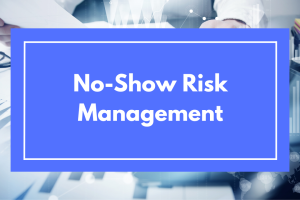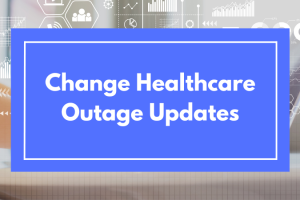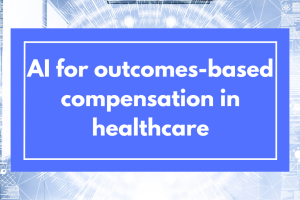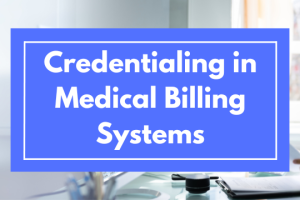Software as a Service (SaaS) pushes the limits of outsourcing and reduces the exorbitant costs of specialized practice management software. A SaaS model is available for all aspects of medical practice management—including scheduling, billing, and SOAP note documentation, which are mission-critical for high-quality healthcare, practice building, and regulatory compliance.
Software as a Service (SaaS), Platform as a Service (PaaS), and Infrastructure as a Service (IaaS)
The Table below (Table 1) compares the characteristics of SaaS, PaaS, and IaaS. (Dua, 2022)
Table 1. IaaS vs PaaS vs SaaS
| IAS | PaaS | SaaS |
| Scalability with on-demand resources | Suite of developer tools and services | Software applications accessible from many devices |
| Only pay for resources used | Middleware service included | Automated version, features, and security updates |
| High level of customization | Automated resource scalability | Subscription-based pricing dependent on usage |
| Robust security, e.g., firewalls | Convenient collaboration frameworks | Integration tools with other cloud services |
- IaaS offers healthcare organizations the flexibility and scalability to manage their own infrastructure. In this model, healthcare providers can leverage virtualized computing resources to support their data storage, networking, and server needs.
- PaaS provides healthcare developers with a platform and development tools to build, test, and deploy healthcare applications. In the healthcare industry, PaaS solutions enable developers to focus on building innovative applications without worrying about the underlying infrastructure.
- SaaS has revolutionized the healthcare industry by offering ready-to-use software applications accessible online. Healthcare organizations can adopt SaaS solutions for various purposes, such as electronic health records (EHR), practice management, patient scheduling, telehealth, and analytics.
What Is Software as a Service?
Software as a Service (SaaS) is a logical step in the progression from build to buy to subscribe, and it’s a manifestation of a major software trend toward service-oriented architecture (SOA). SaaS is the software industry term for delivering software products and services over a network (typically the Internet) under a subscription business model.
The increasing reliability of the Internet, coupled with the availability of completely integrated practice management and billing software, creates supportive conditions for the “pay as you go” business model. SaaS liberates users in two significant ways:
- No large upfront investment: SaaS requires no large up-front investment in hardware and software licenses on the user’s part.
- Shifted Systems Management Responsibility: SaaS shifts the onus of systems management from the user to the SaaS vendor, including the following:
- Internet connectivity, bandwidth, and routers
- Servers for web server software, email, and firewalls
- Capacity management
- Redundancy management
- Application upgrade management
In financial management terms, the SaaS proposition is equivalent to turning a capital expense into an operating expense, which translates into the following:
- Better balance sheets
- Lower risk, especially during the period of rapid technology innovation on the one hand and practice-building stages on the other hand
SaaS differs from application service providers (ASPs) in two ways: domain expertise and software development skills. While ASP vendors have developed primarily hardware and systems expertise and offered foreign business applications, SaaS vendors are experts in the specific application domain.
Cloud in SaaS
The adoption of cloud-based applications in healthcare organizations has experienced significant growth in recent years. Utilizing multiple cloud service providers offers several advantages in analyzing, storing, and processing patient data for future use. Utilizing cloud-based healthcare SaaS solutions, coupled with a multi-cloud approach, not only enhances data management and security but also offers scalability and flexibility. Healthcare organizations can efficiently scale their infrastructure per the evolving demands of patient care while benefiting from the agility provided by cloud technology. (ShahAug, 2022)
AI in SaaS Platforms
According to the Future Health Index (Partovi, 2023), more than half (56%) of healthcare leaders worldwide are either currently using or planning to use digital health technologies. Their preferences are distributed according to the following table:
- 43% prioritize the technology connecting with out-of-hospital settings
- 42% identified cloud-based technology as a solution to support access to information from any location
- 39% prioritize technology for critical decision support technology, such as AI and predictive analytics.
These technologies can assist healthcare professionals in making informed decisions by analyzing vast amounts of data, identifying patterns, and providing predictive insights, repetitive task integration, and workflow optimization for improved efficiency:
- SaaS solutions equipped with AI can automate various administrative tasks such as appointment scheduling, patient registration, and claims processing. This automation reduces manual effort, minimizes errors, and accelerates overall practice operations.
- Incorporation of advanced technology and AI into the SaaS help in managing workforce shortages at healthcare facilities (Philips, 2022).
- SaaS vendors can integrate virtual assistant or chatbot functionalities into their platforms, providing automated and interactive patient communication. These AI-powered assistants can answer common inquiries, schedule appointments, provide basic medical advice, and triage patient concerns, enhancing patient engagement and reducing administrative burdens.
- SaaS solutions can leverage AI to analyze patient-specific data, including genetic information, medical history, and treatment outcomes, to provide personalized medicine recommendations. This technology can assist healthcare providers in tailoring treatment plans, identifying potential adverse drug reactions, and improving therapeutic outcomes for individual patients (8 Ways a SaaS Company Can Benefit From AI).
- AI enhances security in SaaS by enabling real-time threat detection and prevention, strengthening user authentication and access control, and improving data encryption techniques to protect sensitive healthcare information stored in the cloud.(Peranzo, 2023)
SaaS Vendor Selection
The main challenge for the medical practice manager could be integrating newer applications with the subscribed SaaS application. SaaS integration platforms (SIPs) are a popular way to handle the integration challenge. A SIP, like Vericle, provides a comprehensive suite of integrated applications designed to streamline various aspects of healthcare practice management. With Vericle, healthcare providers can access various tools and functionalities to enhance patient relationship management, streamline patient scheduling, facilitate SOAP notes documentation, and simplify billing processes.
Selection Criteria
A medical practice in search of a SaaS vendor must focus on the following factors:
- Functionality – Does the application deliver the required functionality?
- Training – Will the vendor provide sufficient application training?
- Third-party application interface – Does the application work with other applications already deployed in the office? What requirements must be satisfied if you decide to purchase another application later?
- Performance – How do you measure application performance? Are formal performance metrics available continuously?
- HIPAA compliance – What controls are in place to enable access on a “need to see” basis only? Is every access instance logged using a secure mechanism?
- Service level agreement (SLA) – What minimum service levels does the vendor guarantee the client? What are the penalties for violating the SLA?
- Data Ownership – Who owns the data? What security measures does the SaaS vendor have in place to protect sensitive patient data?
- Ongoing support and Disaster recovery – How long would it take to recover from a disaster? Is a secondary data center available 24/7? What level of ongoing support does the vendor offer after implementation? Are there regular software updates, bug fixes, and technical assistance available?
- Disengagement procedures – How long is data available upon severing the relationship? Who is responsible for data transfer to the new vendor?
- Electronic Health Records (EHR) Integration – Does the SaaS vendor support seamless integration with electronic health records systems?
- Telemedicine Capabilities – Does the SaaS solution offer telemedicine features or integration with telemedicine platforms? Can it support virtual consultations and remote patient monitoring?
- Patient Engagement Tools – Does the SaaS vendor provide patient engagement features such as appointment reminders, online scheduling, patient portals, or secure messaging? How effectively can the software facilitate patient-provider communication?
- Data Analytics Availability – Does the SaaS vendor offer robust data analytics capabilities? Can the application generate meaningful insights from the collected data to improve clinical outcomes, operational efficiency, and decision-making?
- Revenue Cycle Management – Does the SaaS solution include revenue cycles management functionalities such as billing, claims processing, and insurance verification? Can it help streamline financial operations and optimize revenue generation?
Using Software Selection Tools to Choose the Best SaaS
When it comes to selecting the right Software as a Service (SaaS) solution for your specific business needs, there are several factors to consider. While traditional methods of research and evaluation can be time-consuming and overwhelming, there are dedicated software selection services that can simplify the process. Two popular platforms in this space are Capterra and G2. Capterra and G2 offer a wealth of information and user reviews, making it easier to assess and compare different software options. These platforms provide detailed descriptions of each software solution, including key features, pricing details, and screenshots.
For example, within the chiropractic software market, Genesis Chiropractic Software has emerged as the Leader, according to the G2 Grid (Figure 1). G2 Grid considers metrics related to customer satisfaction and market presence. Customer satisfaction includes Quality of Support, Ease of Use, and Ease of Setup. With its robust capabilities and proven track record, Genesis has become a go-to solution for chiropractors seeking efficient and reliable software to manage their practices (Jackson, 2023).
Figure 1. G2 Grid of Chiropractic Software (https://www.g2.com/categories/chiropractic)

Conclusions
Software as a Service (SaaS) in healthcare offers cost-effective and convenient solutions for medical practice management. Cloud-based SaaS applications, combined with a multi-cloud approach, enhance data management, security, scalability, and flexibility. AI integration in SaaS platforms automates tasks and provides intelligent insights for improved efficiency and personalized medicine recommendations. Factors such as functionality, training, performance, compliance, support, integration, and patient engagement tools should be considered when selecting a SaaS vendor. Platforms like Capterra and G2 assist in evaluating and comparing SaaS options. Genesis Chiropractic Software is recognized as a leader in chiropractic software.
References
- ShahAug, K. (2022, August 24). Expert analysis of Healthcare SaaS Trends in Medical Industry. Third Rock Techkno. https://www.thirdrocktechkno.com/blog/healthcare-saas/
- Philips. (2022, October 6). The future of AI in healthcare according to four leading experts. Philips. https://www.philips.com/a-w/about/news/archive/features/2022/20221006-the-future-of-ai-in-healthcare-according-to-four-leading-experts.html
- Ostap Zabolotnyy. 8 Ways a SaaS Company Can Benefit from AI. First Bridge. https://firstbridge.io/blog/artificial-intelligence/8-ways-a-saas-company-can-benefit-from-ai
- Jackson, K. (2023, May 17). Features | Genesis Chiropractic Software. Genesis Chiropractic Software and Chiropractic Billing Services. https://genesischiropracticsoftware.com/features/
- Dua, A. (2022, October 7). IaaS vs PaaS vs SaaS: 10 Major Differences. Turing Blog. https://www.turing.com/blog/iaas-vs-paas-vs-saas-key-differences/
- Partovi, S., (2023, April 19), Taking healthcare everywhere – three key themes from the 2023 Future Health Index, https://www.philips.com/a-w/about/news/archive/blogs/innovation-matters/2023/20230419-taking-healthcare-everywhere-three-key-themes-from-the-2023-future-health-index.html
- Peranzo, P. (2023, March 9). 10 Healthcare SaaS Trends That Can Revolutionize the Medical Industry. Imaginovation | Top Web & Mobile App Development Company Raleigh. https://imaginovation.net/blog/healthcare-saas-trends-that-revolutionize-medical-industry/
A Future Book Publication Note:
This article is a chapter in the forthcoming 2nd Edition book “Medical Billing Networks and Processes,” authored by Dr. Yuval Lirov and planned for publication in 2024. We will post more chapters on this blog soon.










2 Responses
I don’t think the title of your article matches the content lol. Just kidding, mainly because I had some doubts after reading the article.
I don’t think the title of your article matches the content lol. Just kidding, mainly because I had some doubts after reading the article.